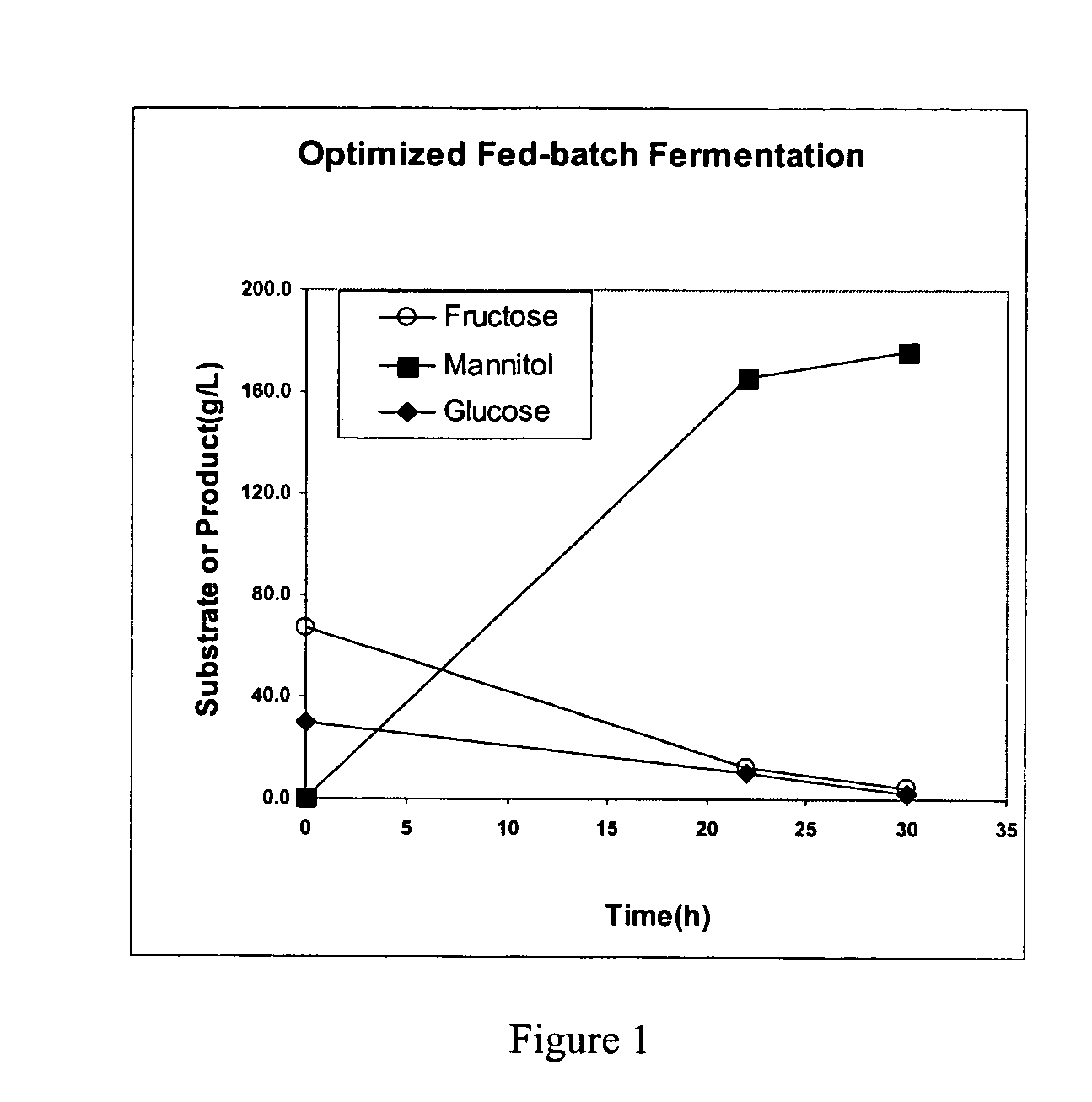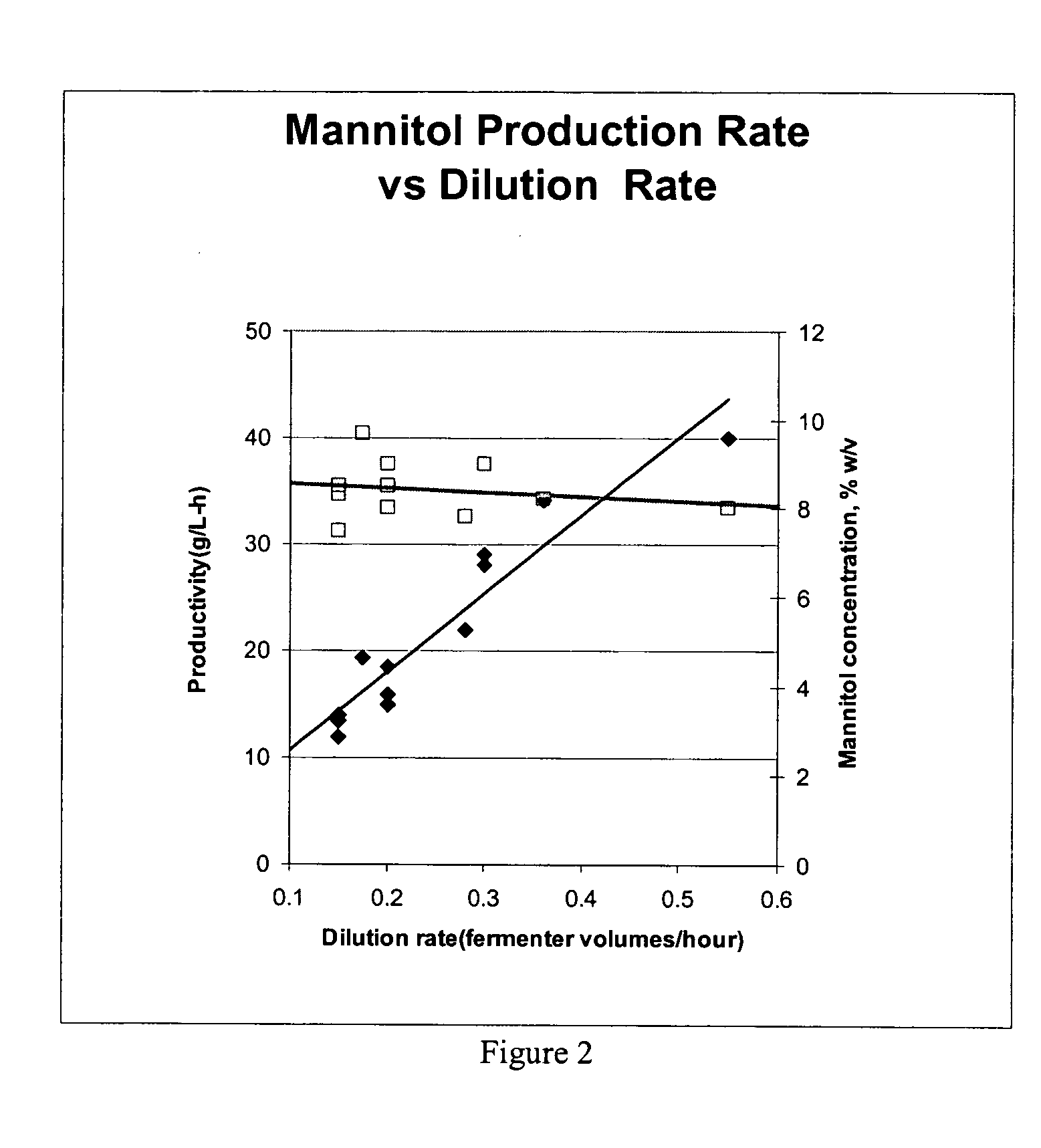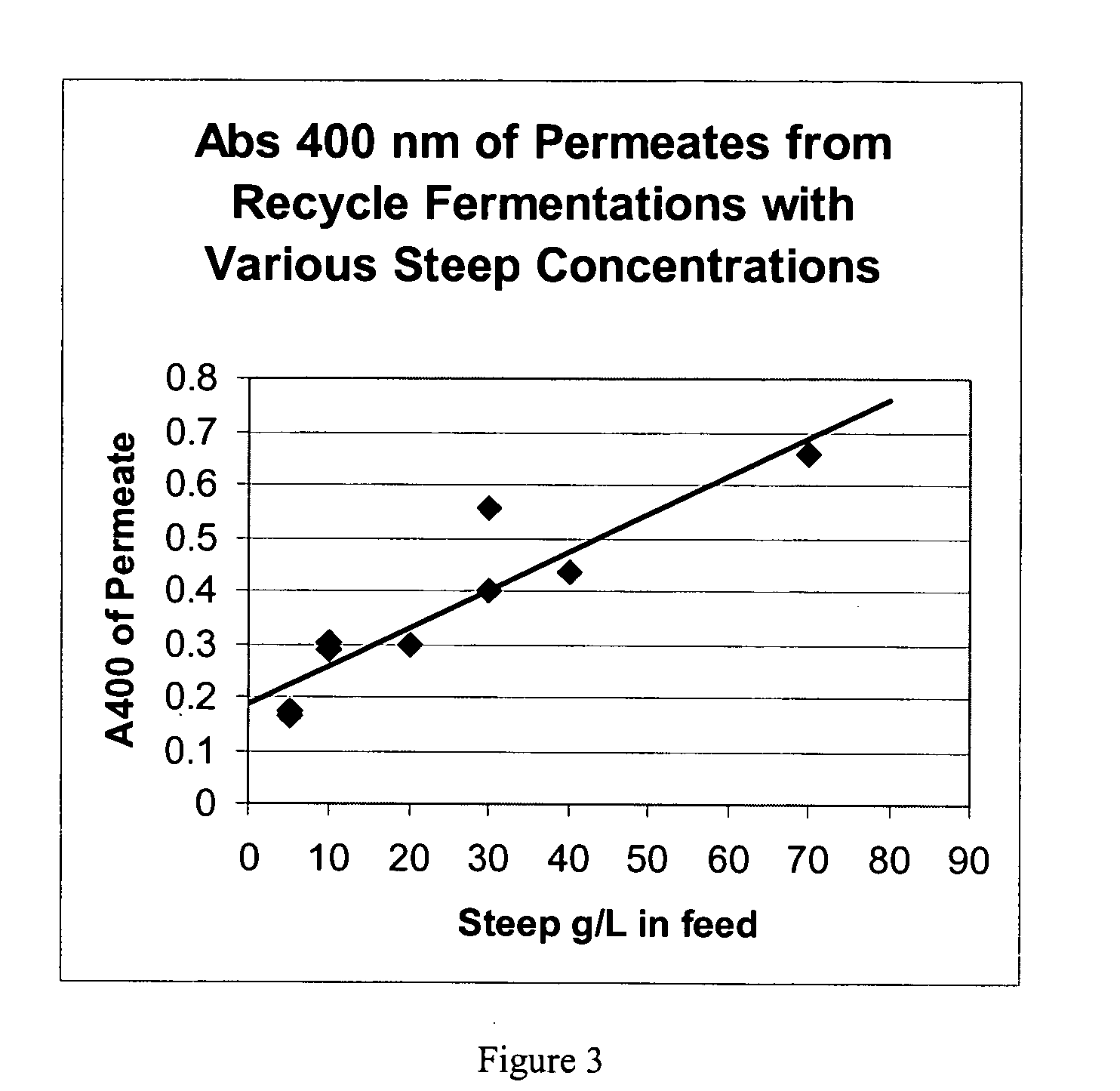Fermentative production of mannitol
a technology of mannitol and mannitol, which is applied in the direction of fermentation, etc., can solve the problems of reducing the conversion efficiency of substrate to mannitol, and achieve the effects of high accumulation of mannitol, reduced evaporation amount, and high volumetric productivities
- Summary
- Abstract
- Description
- Claims
- Application Information
AI Technical Summary
Benefits of technology
Problems solved by technology
Method used
Image
Examples
example 1
Effect of pH Control on the Production of Mannitol by Lactobacillus Intermedius NRRL B-3693
[0037] The fementation protocol of (Bothast et al., Biotechnol. Lett. 16:401-406(1994)) with 150 g / L fructose was used to determine the effect of controlling pH at various levels. In these fermentations the initial pH was 6.5 but fell rapidly to the indicated control points and was maintained there with NaOH. Mannitol production occurred over a fairly broad pH range, from 4.5-6.0, with the optimum rate at pH 5.0-5.5. The percent conversion of fructose to mannitol and the relative proportions of mannitol, lactic acid and acetic acid produced were similar at each pH tested.
TABLE IEffect of pH control on the production of mannitol from fructose byLactobacillus intermedius NRRL B-3693pHUnutilizedMannitolLactic AcidAcetic AcidcontrolledTimesubstrateyieldyieldyieldat(h)(g / L)(g / L)(g / L)(g / L)4.5239.6∀7.3 96.7∀4.922.5∀1.715.7∀0.15.0230.0∀0.0105.7∀0.023.5∀1.216.8∀0.25.5230.0∀0.0104.2∀1.024.4∀0.516.8∀0...
example 2
Optimizing Steep and Peptone Concentrations
[0038] Modified MRS medium is too expensive for manufacturing, so some typical industrial ingredients were tested. Corn steep liquor (CSL) was tested as a replacement for the salts, yeast extract and peptone. Since CSL is not uniform and the products from some suppliers may not be as productive as others, we tested methods to optimize CSL to yield consistent growth media.
[0039] 1. CSL comparison from different sources. Mannitol production using CSL from various sources was tested in fleakers as described in Example 1 except that the medium consisted only of CSL and manganese plus about 29% fructose. The fructose was sterilized separately and added to the sterile fleakers. Since the pH of CSL is low the unadjusted pH of the medium was around 4.0 and the initial pH of the sterilized medium was adjusted to 5.0 with NaOH before inoculation. Table II shows the results of the comparison study. When dosed on an equal weight per volume basis, the...
example 3
Use of Protease to Stimulate Mannitol Production by Lactobacillus Intermedius NRRL B-3693.
[0045] As shown in Example 2, free amino acids appear to be critical to the production of mannitol. Therefore, protease addition to the fermentation was tested with various steeps. Table VII shows a comparison of the effect of protease on mannitol production with three different steeps. The procedure of example 2, Table VII was used with corn steep liquors, 50 g / L, manganese sulfate, 0.05 g / L, glucose, 70 g / L and fructose 130 g / L. Glucose was added based on the observation that up to one-third of the fructose can be replaced with glucose without reducing the yield of mannitol (Saha & Nakamura, Biotechnology and Bioengineering 82:866-87, 2003. Filter sterilized GC106 protease (Genencor International) was added (0.1 mL) to the fermenters and they were incubated for one hour after which the 30 mL inoculum was added. The results in Table VII showed that protease treatment increased the mannitol pr...
PUM
| Property | Measurement | Unit |
|---|---|---|
| concentrations | aaaaa | aaaaa |
| concentration | aaaaa | aaaaa |
| concentration | aaaaa | aaaaa |
Abstract
Description
Claims
Application Information
 Login to View More
Login to View More - R&D
- Intellectual Property
- Life Sciences
- Materials
- Tech Scout
- Unparalleled Data Quality
- Higher Quality Content
- 60% Fewer Hallucinations
Browse by: Latest US Patents, China's latest patents, Technical Efficacy Thesaurus, Application Domain, Technology Topic, Popular Technical Reports.
© 2025 PatSnap. All rights reserved.Legal|Privacy policy|Modern Slavery Act Transparency Statement|Sitemap|About US| Contact US: help@patsnap.com



